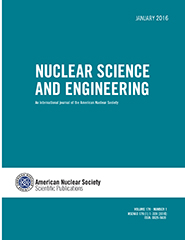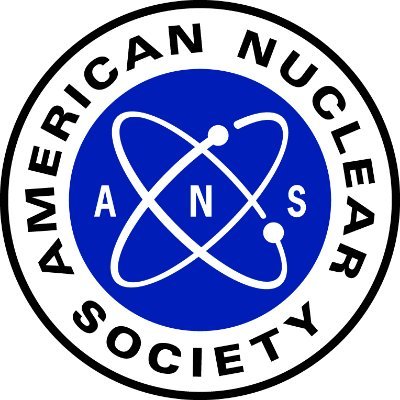Part 2 of 2 Parts
Part of the team’s proposal includes the formation of an Emergency Rescue Team (ERT) that would consist of a group of highly trained and specialized rescuers. The ERT would have specialized machinery and equipment. They would have access to every nuclear power reactor installed in an assigned area. The intention is to have the ERT be able to reach any of its assigned reactors within and hour and/or be able to execute a remote shut down of the reactor experience difficulties.
In their report, the team explains how and why the features of their new system could have prevented core meltdowns and the resulting nuclear disasters for each of the three major nuclear accidents listed above.
The Three Mile Island nuclear disaster was the most devastating accident in the history of U.S. nuclear power plants. The accident was ultimately found to be the result of a series of typical failures that combined to cause the disaster. If the operators of Three Mile Island had access to an alarm from the E-SMD detectors, an emergency shutdown of the reactor could have been carried out well before the events that led to the disaster.
The Chernobyl accident in Ukraine was the result of critical errors on the part of the staff at the power plant. If the proposed ERT had been available, they could have executed a remoted control shutdown. The intervention of military units might have prevented the catastrophe that resulted from the human errors.
With the flooding of the emergency generators at Fukushima, the flow of cooling water to the reactors was lost which resulted in the meltdown of Units 1, 2 and 3 as well as the explosive destruction of Unit 4. Alarms from E-SMD detectors and quick response from the EFT could have prevent the destruction of the Fukushima nuclear power plant.
The report states that while there have be three notorious major nuclear plant accidents, there have been about five hundred safely operated nuclear power plants since controlled fission was first demonstration in 1942 and the connection of the first nuclear fission power reactor to the U.S. electrical grid in 1954. In addition, there have been a few thousand accident-free reactors utilized for purposes other than the generation of electricity. These specialized reactors were dedicated to such uses as research, nuclear isotope production and marine propulsion.
In conclusion, the authors of the report state that “The industry and/or the Government of responsible Countries where applicable, become the main players for the possible implementation of the ideas in this paper. A strategy is needed in this connection: academia and research institutes willing to be engaged into practical applications of the nuclear technology should become actors.”
The intentions of the research team are admirable. We have about four hundred nuclear power reactors currently operating around the world. Anything that can make them safer would be very important. However, the bigger problem is than no matter how good nuclear power reactor safety is, there is still the possibility that there will be another major nuclear accident. It is probable that one more major accident will turn public opinion, political support and investor interest against further expansion of nuclear power.
Author: Burt Webb
-

Nuclear Reactors 739 – Research Team Pioneers New Safety System For Light Water Reactors – Part 2 of 2 Par
-
Nuclear News Roundup Nov 26, 2019
-

Geiger Readings for Nov 26, 2019
Ambient office = 109 nanosieverts per hour
Ambient outside = 102 nanosieverts per hour
Soil exposed to rain water = 103 nanosieverts per hour
Tomato from Central Market = 74 nanosieverts per hour
Tap water = 115 nanosieverts per hour
Filtered water = 91 nanosieverts per hour
-

Nuclear Reactors 738 – Research Team Pioneers New Safety System For Light Water Reactors – Part 1 of 2 Part
Part 1 of 2 Parts
A major concern in the use of nuclear power is the possibility that an accident at a nuclear power plant could cause the reactor(s) to meltdown and release huge amounts of radiation into the environment. There have been three big nuclear accidents in the past forty years. These include Three Mile Island in the U.S. in 1979, Chernobyl in Ukraine in 1986 and Fukushima in Japan in 2011. The negative impact of these three accidents have resulted in many countries around the world to either phase out their nuclear power reactors or to pledge never to build any nuclear power reactors.
With the exception of a few countries such as Russia and China, the global market for nuclear power reactors is contracting. In the U.S., the past few years have seen the permanent closure of four nuclear power plant with plans to close more on the way. In the same time period, only two nuclear power reactors were being built. Global climate change requires us to quickly move away from fossil fuel use and nuclear power has been touted as reducing carbon emissions significantly.
Recently a research team consisting of Francesco D’Auria at the University of Pisa in Italy, Nenad Debrecin at the University of Zagreb in Croatia and Horst Glaeser at the Global Research for Safety in Germany published a report on their forty years of collaboration in the open-access peer-reviewed journal Nuclear Energy and Engineering published by the American Nuclear Society.
In their report, the team proposed a new type of safety barrier that could be used in big light water reactors which are in common use around the globe. The new barrier would cost a fraction of the obsolete barriers already in use and would reduce the probability of a core meltdown to the probability that a nuclear reactor would be hit by a big meteorite.
The design of the new barrier was based on the team’s research over the last few decades including research on accident analysis capabilities as well as nuclear fuel material performance. Concepts developed by the founders of the nuclear power industry were also used in the design. Their proposal is supported by studies and discussions from two major nuclear conferences; the 11th Scientific and Technical Conference “Safety Assurance of NPP with VVER” held in Russia in May of 2019 and the International Conference on Nuclear Power Plants, Structures, Risk & Decommissioning, NUPP2019 held in the United Kingdom in June of 2019).
One major motivation for the team’s proposal was to restore public confidence in nuclear power which has been severely impacted by the three nuclear accidents mentioned above. They also want to bring new knowledge about nuclear energy production gained over the last few decades into practice in the global nuclear power industry.
The team hopes to implement novel solutions inspired by up-to-date research into recently identified nuclear fuel structural weakness. They are also working on a more elaborate Extended Safety Margin Detection (E-SMD) system which will allow for the emergency shutdown of a nuclear reactor even in the face of low and very low probability events. It will also provide advance information to operators of nuclear power plants regarding the actions needed to prevent or reduce possible damage.
Please read Part 2 -

Geiger Readings for Nov 25, 2019
Ambient office = 108 nanosieverts per hour
Ambient outside = 118 nanosieverts per hour
Soil exposed to rain water = 121 nanosieverts per hour
Blueberry from Central Market = 101 nanosieverts per hour
Tap water = 100 nanosieverts per hour
Filtered water = 91 nanosieverts per hour
-

Geiger Readings for Nov 24, 2019
Ambient office = 137 nanosieverts per hour
Ambient outside = 97 nanosieverts per hour
Soil exposed to rain water = 98 nanosieverts per hour
English cucumber from Central Market = 96 nanosieverts per hour
Tap water = 96 nanosieverts per hour
Filtered water = 73 nanosieverts per hour
-

Geiger Readings for Nov 23, 2019
Ambient office = 102 nanosieverts per hour
Ambient outside = 103 nanosieverts per hour
Soil exposed to rain water = 103 nanosieverts per hour
Blueberry from Central Market = 72 nanosieverts per hour
Tap water = 105 nanosieverts per hour
Filtered water = 87 nanosieverts per hour
Dover sole – Caught in USA = 108 nanosieverts per hour
